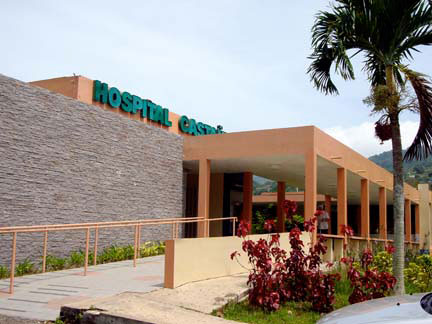HRSA Health Center Program Clinical Requirements

Health Center Program grantees, which receive federal funding, and Federally Qualified Health Center Look-Alikes (FQHC LAs), which do not, must meet a set of requirements. The Bureau of Primary Health Care (BPHC), within the Health Resources and Services Administration (HRSA), administers the Health Center Program and provides ongoing oversight of both Health Center Program grantees and FQHC Look-Alikes. Included in the program requirements are clinical expectations that guide both the types of services offered, as well as the quality of those services.
While the intent of these requirements is to assure quality service to health center patients, many organizations struggle to understand how to design and manage their sites to meet the requirements. Migrant Clinicians Network (MCN) is an excellent resource to new, potential, and existing grantees wanting additional assistance or information about HRSA/BPHC’s clinical requirements, especially for those who serve a migrant farmworker population. In this section of our website you will find information about clinical performance measures. Please explore our resources page, our tool box, and technical assistance services offered by MCN that will help you better manage your organization. If you do not find what you need on this page, you may contact Theressa Lyons, Senior Program Manager, Training and Technical Assistance Coordinator for further guidance.
Information about the Clinical Performance Measures
If you are associated with a Health Center grantee receiving funding to serve a migrant farmworker population, you may have some familiarity with the performance measures introduced in 2008 by the Bureau of Primary Health Care (BPHC). Grantees must report annually into the Uniform Data System (UDS) on a set of clinical and financial performance measures in an effort to collect data that will allow for the evaluation of individual and collective performance trends over time. The required measures are described here. Health centers that meet or exceed quality improvement measures in their annual Uniform Data System reports can receive quality improvement award payments that reward their achievements and support further improvement.
Migrant-Specific Performance Measures
Many Health Center Program grantees that serve large migrant populations are interested in developing measures that reflect the unique features of both the migrant population itself and the service delivery modalities used by Migrant Health Centers. MCN was asked by BPHC in 2009 to coordinate a work group to respond to this need, and that group developed a set of recommended migrant-specific performance measures. The conclusions of that work are presented here.
The process of developing migrant-specific measures included consideration of the following questions:
- What’s already out there?
- What’s the evidence?
- What do our experts say?
- What is most relevant to migrant farmworkers and Migrant Health Centers?
Unlike the required performance measures, these measures are not mandatory for Health Center Program grantees. Their adoption, however, has been estimated by MCN’s work group to provide significant benefit to health centers serving migrant populations. Selected supplemental measures are as follows:
Preferred Enabling Services Measure: Percentage of migrant patients 18 years of age, with blood pressure 140/90 who are successfully referred for care.
This measure would monitor the effectiveness of enabling services by documenting the identification of patients outside of the clinic setting with uncontrolled hypertension who are entered into care. “Successfully referred” means the patient is referred and the resulting clinic visit is documented.
Calculation: Farmworker patients seen outside of the clinic setting with documented BP of 140/90 who are 1) referred for care and 2) are seen by a provider / Total farmworker patients seen outside of the clinic setting with documented BP of 140/90.
Additional Enabling Services Measures include:
- Percent of migrant women who have documented screening for sexual violence during the measurement year
- Percent of migrant patients who are 12-years old or older who have documented tobacco use status during the measurement year
Preferred Environmental and Occupational Health Measure: Percent of registered farmworker patients who receive pesticide prevention education.
This measure would document how many farmworker patients receive education regarding the prevention of pesticide exposure, such as the use of personal protective equipment (PPE), proper storage and handling of pesticides, etc.
Calculation: Farmworker patients with documented pesticide prevention education / Total registered farmworker patients.
Additional Environmental and Occupational Health Measures include:
- Percent of registered farmworker patients screened for Environmental/Occupational Health (EOH) risk
- Percent of registered farmworker patients who receive eye protection education
Preferred Financial Measure: Average cost per patient for enabling services.
This cost measure would provide a basis to value each enabling service individually and/or in total, allowing each grantee to determine the baseline, trends, and goals for their program. Increases in service levels per patient may result in increased “average cost per patient,” while increases in the total number of patients served within the same staffing and cost structure will result in lower “average cost per patient,” indicating improved efficiency.
Calculation: Total Cost for Enabling Services / Unduplicated Enabling Patient
(or, Average Hours per Patient X Average Cost per Hour)
Additional Financial Measures include:
- Average cost per hour for enabling services
- Overhead rate – administration and facilities
- Average hours per patient for enabling services
NOTE: The migrant-specific performance measures discussed here are not meant to replace the BPHC-required core measures, and are not required for Migrant Health Centers. They are intended only as suggested supplemental measures.